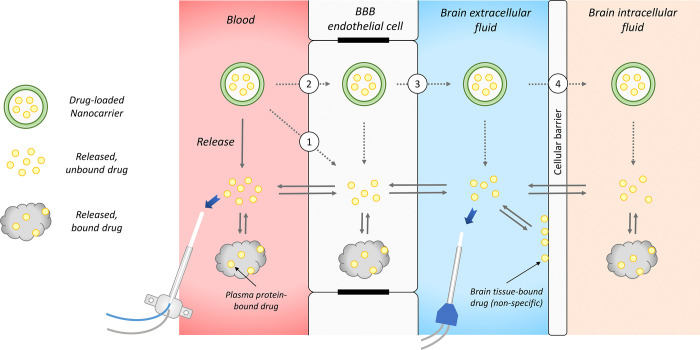Figure 4.
Potential in vivo “fate” of brain-directed NCs and the critical role of microdialysis in evaluating the in vivo performance of nanodelivery to the brain. After administration of an NC in blood, the drug payload will release from the NC. Once the drug is released, it will behave based on its own properties, being transported across the BBB and cellular barrier and also binding to plasma protein, brain cellular membrane, and intracellular components. NCs may contribute to improved brain drug delivery through several proposed mechanisms: (1) NCs interact and fuse with the BBB endothelial cell membrane and then release the drug to the endothelial cells. (2) NCs are endocytosed into BBB endothelial cells, followed by drug release within the endothelial cells. (3) NCs are transcytosed across the BBB, before releasing the drug in brain extracellular fluid. (4) Transcytosed NCs are further internalized into brain cells, after which the drug is released intracellularly. Microdialysis separates the released, unbound drug from the drug remaining in the NC, enabling continuous quantifying therapeutically and toxicologically relevant drug entities over time, as described by the blue arrows.

